Toenail fungus is an infectious disease caused by pathogenic microorganisms that are found on the skin, in the spaces between the toes and the nail plates.It causes significant discomfort and leads to serious complications.Let's take a closer look at the treatment of athlete's foot in order to prevent the disease from becoming chronic and avoid relapses.
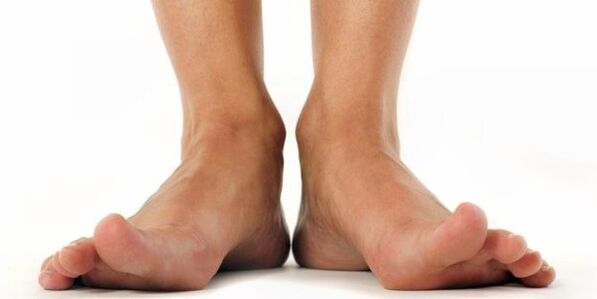
Causes and symptoms of athlete's foot
The disease is caused by Trichophyton rubrum spores and other yeasts and molds..Under favorable conditions, they multiply quickly and rapidly worsen the condition of the legs.
Doctors identify several factors that contribute to the development of pathogenic microflora:
- weakened immune system;
- excessive sweating of the feet;
- shoes that are not the right size;
- corns, calluses, scratches on feet;
- chronic infectious and endocrine diseases;
- long-term use of antibiotics;
- poor hygiene;
- Wearing shoes made of artificial materials that do not allow air to pass through;
- Flat feet.
Children are more susceptible to mycotic infections.Their immunity is not yet fully developed, the skin on their feet is too thin, so fungi easily penetrate the body and begin to multiply.
If the skin of the feet becomes infected, unpleasant symptoms quickly appear.Most often, the primary infection occurs between the toes and gradually spreads to the foot.Many pathogens also affect the nail plates and cause the development of onychomycosis - nail fungus.
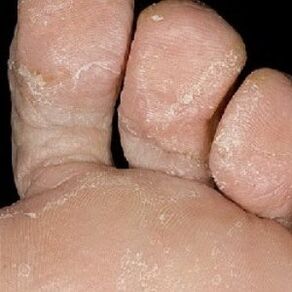
The pathology consists of several stages characterized by certain signs.
- The initial stage is hidden and is noticeable by a slight flaking between the fingers, which is rarely noticed.
- Then small cracks form, the peeling increases and gently covers the side of the foot.The skin becomes covered with small scales and squamous mycosis develops.
- Gradually the symptoms worsen.Itching and burning occur, the affected area thickens and becomes rough.When the fungus becomes hyperkeratotic, the epidermis loses its elasticity and a skin pattern clearly appears on it.The burning between the fingers intensifies.
- When the intertriginous stage begins, the disease often affects the nails.Yellow-brown spots appear on them, they deform and crumble.The patient is constantly bothered by an unpleasant odor emanating from his feet.The skin peels off, small ulcers and deep cracks form, causing pain when walking.
The advanced form of the disease leads to a rash between the fingers and on the feet.Small dense bubbles often merge with each other.When they burst, weeping sores remain in place and itch severely.
Routes of infection
Fungal spores remain viable in the environment for a long time, so it is easy to contract the disease in the most unexpected places.However, the most favorable conditions for their development are warmth and high humidity.
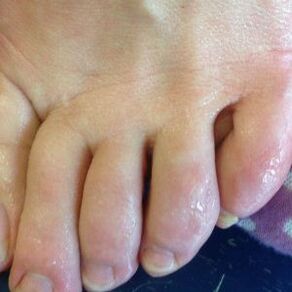
For this reason, people who visit the following are at risk:
- swimming pools;
- bathroom;
- saunas;
- fitness centers;
- Beaches.
Even with regular disinfection, fungal infestation can form on all objects located there.Therefore, you should avoid ordinary items in such places and be sure to take spare shoes with you.
Military personnel are at risk.Most often, soldiers in the army wear uncomfortable shoes that do not allow air to pass through.This causes the feet to sweat, creating microtraumas into which the fungus penetrates.
There are two types of infections.The first is the direct route through direct contact with the infectious agent when communicating with a sick person, caring for an animal or walking barefoot on the ground and sand.The second route leads to infection through objects belonging to infected people or pets.
diagnosis
For successful fungal treatment, consultation with a dermatologist is necessary.The specialist conducts a visual inspection and carefully examines the lesions.
In order to make a correct diagnosis, it is important to inform the doctor of any worrying symptoms and to report previously suffered mycoses and other diseases.
In order to accurately determine the presence of an infection and the type of pathogen, the doctor must take blood, a nail or a skin swab for analysis.Laboratory tests must be carried out without fail.There are more than 500 fungal species that have different drug resistance thresholds and require different treatment tactics.
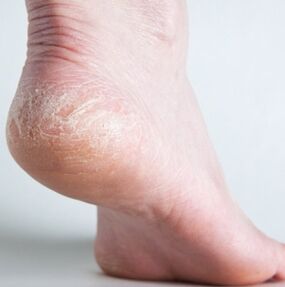
- Microscopic examination reveals the presence of fungi.The sample is treated with special preparations and examined under a microscope to find spores.This test allows you to determine the presence of a fungus and its concentration.
- Bacterial culture provides more precise results.Biological material is placed in a culture medium.If pathogenic cells are present in the scraping, fungal colonies begin to grow from them, which are subject to careful examination.The analysis takes between 2 days and 4 weeks.The duration depends on the type of infection.
- PCR – Polymerase Chain Reaction – is necessary to identify the specific species of fungus by identifying the DNA of the pathogen.To do this, the affected area must be scraped.The test performance is around 100%.
- An enzyme-linked immunosorbent test (ELISA) is taken from a vein and allows you to determine the titer of antibodies to a specific pathogen and find out the exact cause of the disease.
If your skin condition changes, you should go to the hospital.Even slight flaking and itching between the fingers cannot be overlooked.Otherwise, the disease affects the foot and nails and is more difficult to cure.
Treatment
Fungus on the feet requires an integrated approach.The intensity of treatment depends on the type of infection and the extent of damage to the skin and nails.
Therapy includes medications for internal and external use as well as careful hygiene.The use of traditional medicine recipes is suitable as an auxiliary method.
Medication
The treatment regimen should be prescribed by a doctor based on the patient's clinical picture.To treat adults, medications in capsules or tablets, antifungal creams and ointments are used.Control methods are aimed at eliminating pathological microorganisms and healing the skin.Medications should not be stopped until full recovery..
Creams
Creams offer an effective treatment for fungi.They have a light texture and are quickly absorbed.When choosing a product, you must consider contraindications to use and follow the recommendations of a specialist.
The cream should be applied regularly, after thoroughly washing the skin with laundry soap and drying it.
Anoint
The selection of antifungal ointments is very large.Before starting treatment, allergic reactions and other side effects should be ruled out.
If a fungal infection of the feet is complicated by a secondary infection and other means do not bring the expected result, the dermatologist prescribes ointments based on glucocorticosteroids.
Medicines quickly relieve inflammation and stop the disease at any stage, but have many contraindications.They must be taken strictly according to the instructions, without exceeding the dosage.
An effective remedy for eliminating all signs of fungus is salicylic acid ointment.This is a simple and inexpensive drug that can be used in two ways:
- Treat the affected area three times a day.
- Apply the product under the bandage before bed and leave it on overnight.
After compresses, the skin can peel and peel severely.You can easily eliminate such phenomena using soda baths (1 tablespoon of soda per 1 liter of hot water).The procedure should be carried out every other day throughout the treatment.
pills
To increase the effectiveness of therapy, the use of external agents is often combined with internal medications.Tablets can have a strong effect on the entire body and should therefore not be taken uncontrollably.
It is recommended to treat nail fungus with fungistatic and fungicidal drugs that suppress the growth of the fungal colony and destroy the pathogenic flora.
The list of antifungal drugs is diverse.A dermatologist may recommend different medications based on your medical history and symptoms.The doctor determines the admission rules.You must strictly follow his instructions.
Folk remedies
By using traditional methods as additional therapy, you can achieve a faster recovery.To get rid of foot mycoses use:
- warm baths;
- homemade ointments;
- compresses;
- Lotions made from medicinal herbs.
Before treatment, it is important to make sure that there is no individual intolerance to the components of traditional recipes.
Ointments against fungi
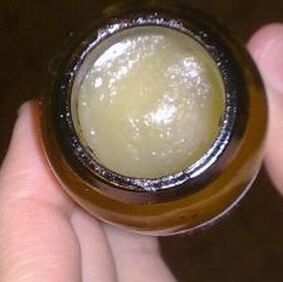
Homemade ointments help fight pathogenic flora.
- Copper sulfate, yellow sulfur and goose fat are combined in equal proportions in an enamel container and stirred thoroughly.Put on low heat, bring to a boil and turn off.The mixture must be cooled and poured into a glass jar.Store in a cool, dark place.Apply to affected areas morning and evening until all symptoms disappear.
- You can prepare a simpler recipe.You need to take goose fat and wood ash in equal proportions.Knead the ingredients together until a smooth mixture is formed.Apply generously to the affected areas twice daily.
Compresses and masks
- A good antifungal remedy is an onion-garlic mask.You need to peel 2-3 cloves of garlic and a small onion.Grind the pulp and spread it in a thick layer on the affected skin area.Cover with cellophane, bandage and put on socks.It is recommended to carry out the procedure in the evening and leave the mask on until morning.After waking up, the bandage should be removed and the body washed with water.Treatment should be carried out daily until recovery.
- A mixture of celandine and tea tree oil is suitable for a compress.Oil is added to a tablespoon of crushed dry vegetable raw materials.A thick paste should form.It must be applied to the places where the fungus is located, wrap the leg in polyethylene and insulate it.Apply the compress regularly at night for at least 2 weeks.
- An effective basis for a compress is obtained from medicinal herbs.You need to pour 400 ml of sunflower or olive oil into the pan.Add 1 tablespoon each of marigold petals, peppermint, comfrey and rose radiola.Light and heat to 60 degrees.Turn off and store in a dark place for a day.Then filter.Use the oil mixture as a compress for 1 hour twice daily.The method has a gentle effect and therefore can be used to treat a child if there is no allergy to herbs.
bathroom
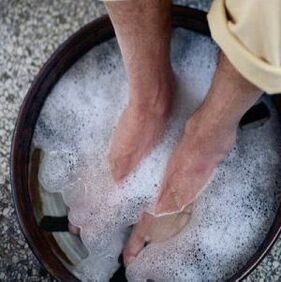
- The simplest bath for athlete's foot consists of salt and baking soda.You need to dissolve the ingredients in warm water, 1 spoonful of soda and 1 spoonful of salt per 1 liter of water.Dip your feet in the liquid and keep them there for 15 minutes.Finally, rinse the limbs under running water and dry them.
- The herbal spurge is suitable for preparing a bath.You need to measure 3 tablespoons of dry grass and pour 3 liters of boiling water over it.Wrap in a towel and let rest for 4 hours.Strain, warm slightly and pour into a bowl.Leave your feet in the liquid for about half an hour.The frequency of the procedure is 1 time every 2 days.Duration 1 month.
- Strong coffee inhibits the development of pathogenic spores.You need to prepare a drink (1 tablespoon of ground coffee per 250 ml of water).When it has cooled to a comfortable temperature, pour it into a bowl and place your feet there for 20 minutes.It is important that the areas affected by the fungus are covered with water.The treatment can be carried out daily for a longer period of time.
Herbal washes and lotions
Many medicinal herbs have a pronounced antifungal effect.To treat mycoses on the feet, it makes sense to use a medicinal herb.
You need:
- marigold flowers;
- oak bark;
- dried blackberries;
- Verbena herb.
The components must be mixed in equal proportions.Take 3 spoons of the mixture, add 500 ml of water and place in a water bath.Simmer for 20 minutes, allow to cool and strain through a filter.You need to wash your feet and toes with the herbal decoction 2-3 times a day and apply lotions to the affected areas for half an hour.

Alcohol tincture of propolis helps fight diseases.It can be purchased at a pharmacy.Gauze is soaked in the liquid and applied to the feet for 30 minutes or the affected areas are wiped with a cotton swab three times a day.
prevention
Athlete's foot is an insidious disease that requires serious treatment.Proper prevention is necessary to reduce the likelihood of infection.It is recommended to follow simple rules:
- avoid high humidity;
- Don't try on someone else's shoes.
- Maintaining foot hygiene.
It is important to control sweating.You can use regular talc for this.To keep your skin healthy and crack-free, you need to regularly lubricate it with moisturizer and take a bath with baking soda once a week.
During treatment, bed linen should be boiled, socks changed daily and washed thoroughly in hot water.Manicure accessories must be systematically disinfected.To prevent re-infection, it is necessary to treat the inside of the shoes with vinegar or medical alcohol.


















